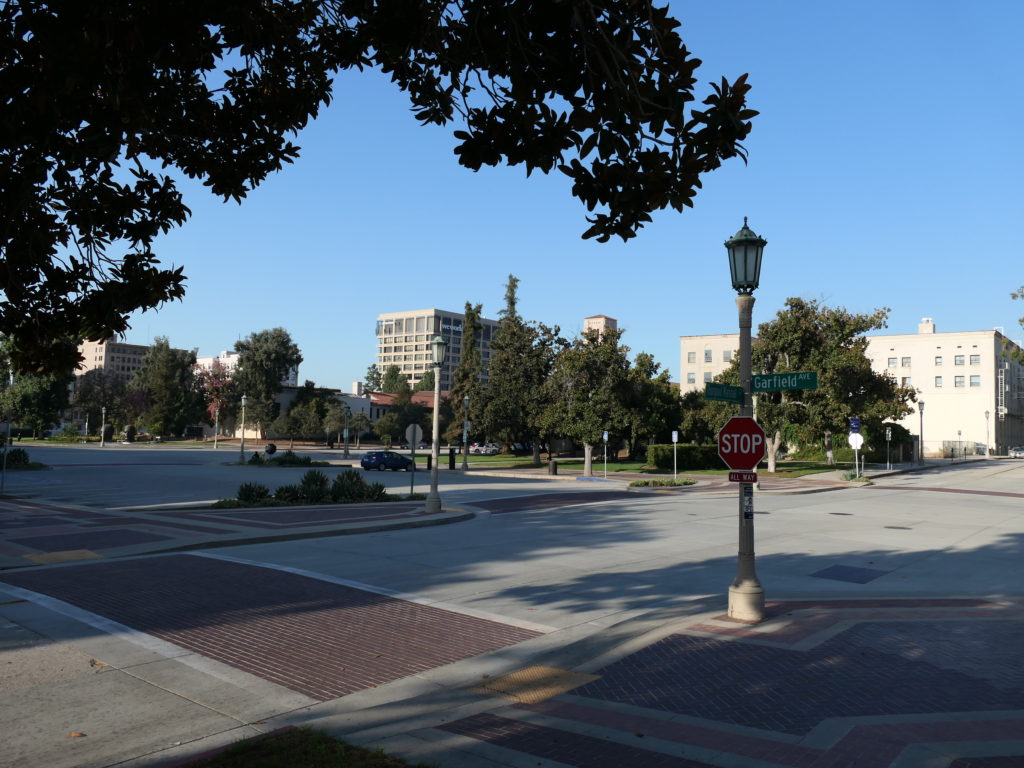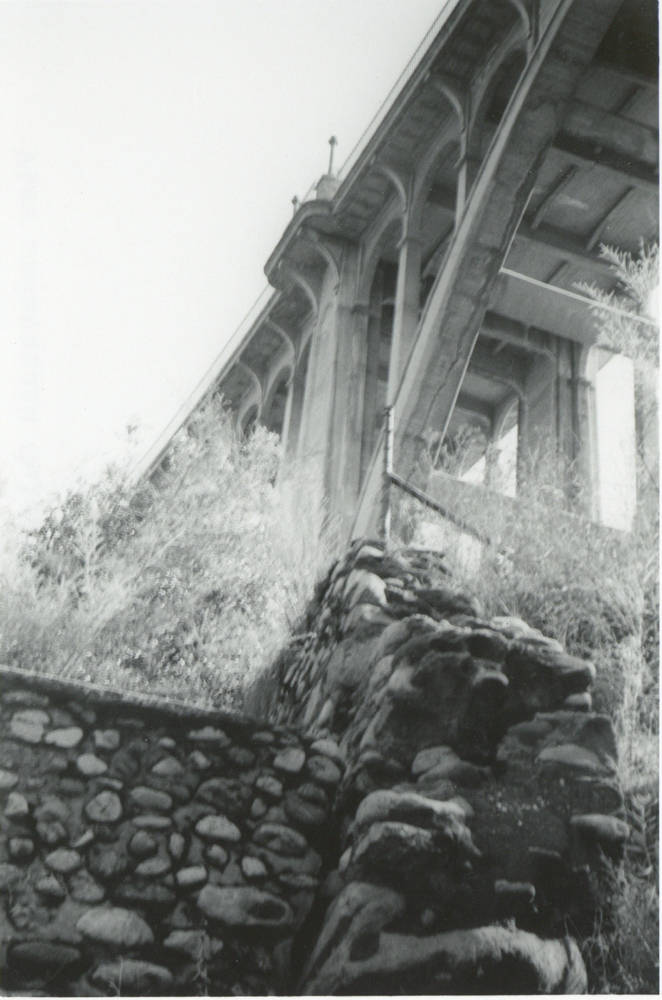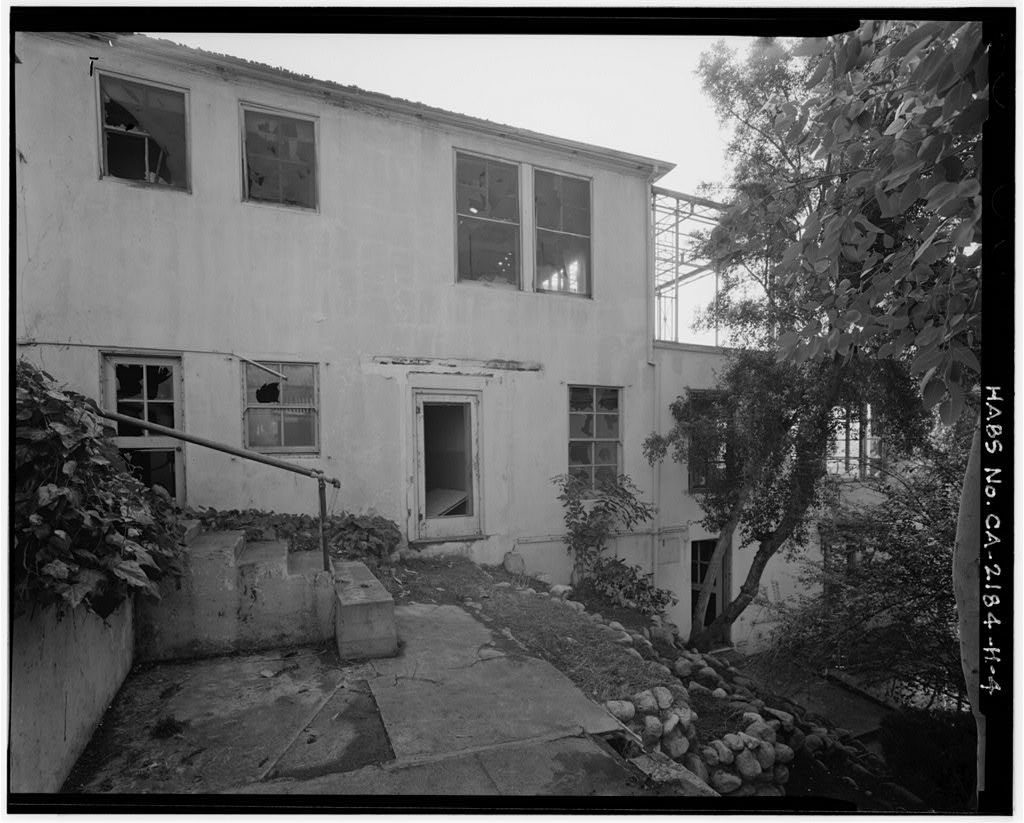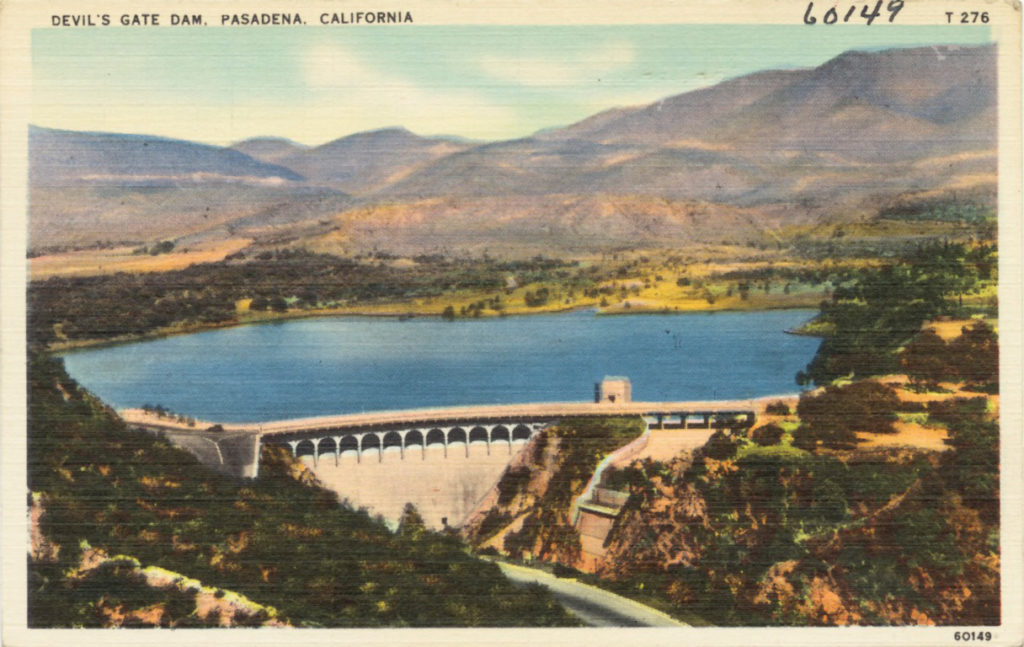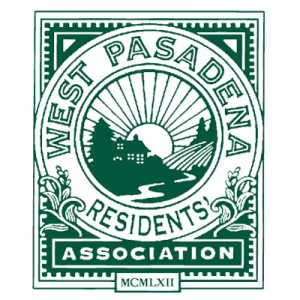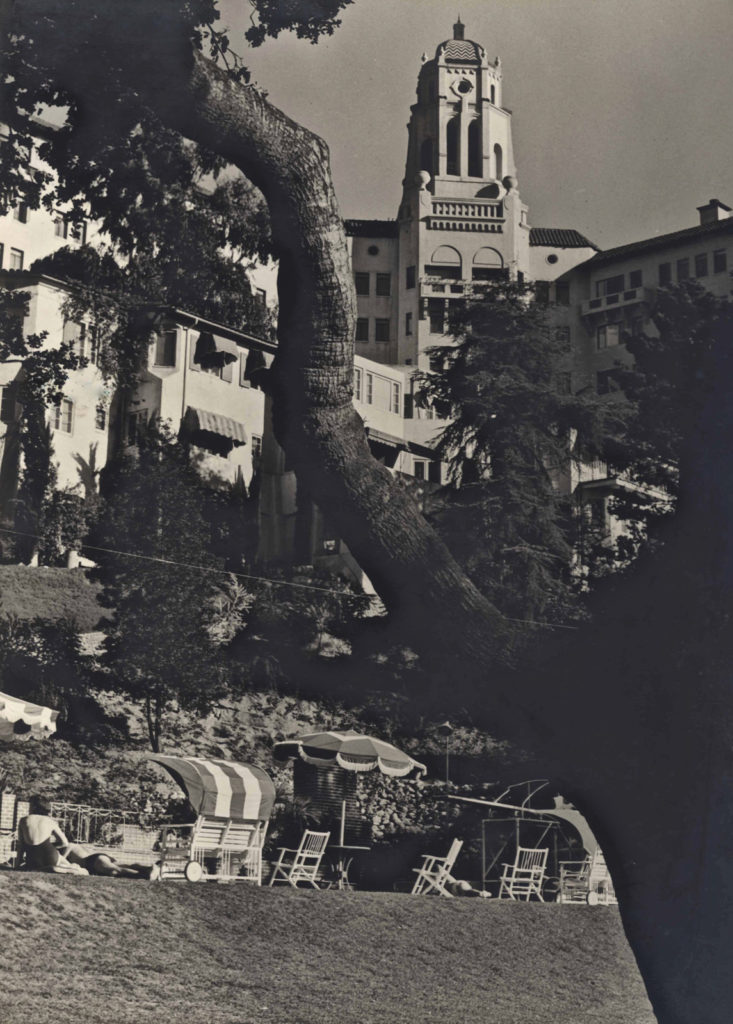
Click to enlarge
Courtesy of the Archives at Pasadena Museum of History (H85-26)
1958 to 1960 – The first stirrings of what would eventually become the WPRA can be found in a grassroots effort led by Grand Avenue resident Marge Weller. She incited her neighbors, including Becky Wheeler, Kay Files and others to defeat the federal government’s proposal to convert the then-abandoned and deemed “surplus” Vista del Arroyo Hotel (in which the 9th Circuit U.S. Court of Appeals now operates) into a central in-take facility for residents of the western U.S. enlisting in the U.S. Army. As Marge puts it in a note she wrote in 1998, the “whole thing was so ridiculous.” She and her neighbors envisioned buses carrying 400 enlistees through the neighborhood and parking on Grand Avenue each day. Then-Congressman H. Allen Smith was reported to have said when he and the Army capitulated, “Get those damn ladies off my back!”
Marge, Becky and Kay, along with Richard Jencks, who was to become the WPRA’s first president, and others joined together as “Pasadenans FOR ‘vote NO’ on High Rise,” to derail plans to construct two 14-story high-rise buildings—one at 175 No. Orange Grove and a second for 1 So. Orange Grove; and extend high-rise zoning along the length of Orange Grove, then zoned only for single-family dwellings and low-density garden-style apartments.

1961 – The proto WPRA conducted a postcard survey to buttress arguments for retention of the single-family character of the area, which the General Plan would have rezoned for apartments.
1962 – WPRA incorporated with Richard Jencks as the first president and adopted permanent bi-laws.
Succeeded in turning away the proposed high-rise plans and zoning revisions through a citywide election; subsequently, the Planning Commission rejected the high-rise plans.
1963 – Opposed a proposal by the Planning Commission to rezone for medium-rise garden apartments land north of Colorado Boulevard on Orange Grove Boulevard.
1964 – The WPRA expressed interest in the formation of a City Architectural Review Board.
WPRA supported an appeal of a decision by the Planning Commission to grant a variance for the construction of town houses on the old Durand estate at 275 Arlington Drive.
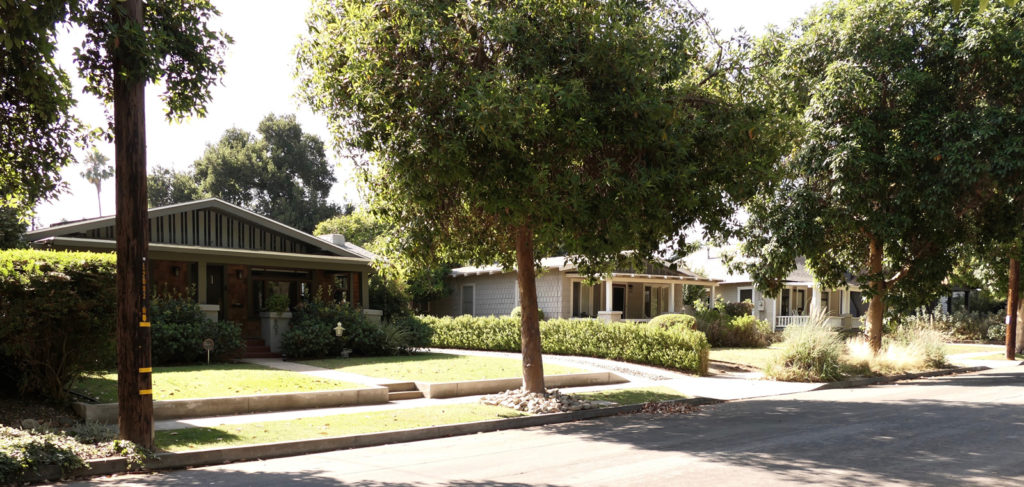
1970s
1972 to 1974 – The WPRA chaired a Traffic Study Committee that succeeded in having traffic lights installed on So. Orange Grove at Del Mar and Madeline. Although the committee had also asked for a light at Bellefontaine, the City didn’t agree to install it until after a tragic accident.
1978 – The WPRA leased its first “permanent” WPRA address: A Post Office Box!
Supported the Interim Arroyo Seco District to establish land-use controls and sponsored (with Friends of the Arroyo) an “Arroyo Walk” to promote history and native plants.
WPRA formed a committee to follow the development of the Vista del Arroyo site.
1979 – The WPRA promoted restoration of Vista del Arroyo Hotel to serve as U.S. Court of appeals, but expressed concern about resulting traffic.
Participated in discussions about City Manager’s recommendations to increase usage of Rose Bowl to raise revenues for the City’s general fund.
WPRA expressed concern about encroachment into the Arroyo Seco by a proposal for a 16-unit condominium at 50 North Arroyo.
Petitioned Caltrans regarding landscaping at the eastern end of streets between Del Mar and California along 710 stump.
WPRA agreed to solicit members to help raise $4,500 to fund a “professional engineering” study of structural problems with Colorado Street Bridge. Caltrans doubted it could get funds for the project so it recommended demolition and replacement of the bridge.
1980s
1980 – WPRA supported the downzoning of the west side and other Pasadena residential neighborhoods.
1981 – The WPRA studied implications of the Salvation Army’s purchase of property on W. Del Mar to move from DeLacey and West Colorado.
Supported a petition circulated by “Neighbors for Open Government” to make the Pasadena Redevelopment Agency (PRA) more responsive to citizens … prompted by the PRA’s plans on Los Robles and demolition of numerous historic properties to make way for new structures.
Contributed $360 to purchase nine 15-gallon oaks for planting north on Arroyo Boulevard near the Colorado Street Bridge.
WPRA reviewed a Pasadena Redevelopment Agency proposal to add 4 million square feet of additional commercial space, primarily office facilities, within 10 new 20-story buildings on or near Los Robles between Walnut on the north and Cordova on the south.
The WPRA monitored relocation, rather than demolition, of several “fine” homes to make way for a condominium project on South Grand. The historic La Solana Inn at 150 S. Grand had already been demolished.
Contributed $1,380 to the Recreation and Parks Foundation (created in 1980 for citizens to contribute to their favorite park or any park in the city) for improvements in the Lower Arroyo.
WPRA supported an amendment to the City Charter to preserve public parkland.
At the membership meeting, the WPRA proposed plan for the restoration of the Lower Arroyo Seco, with City arboriculturalist William Riley Caudell as the guest speaker.
1982 – Supported the Cable TV committee’s proposal for public access channels to be managed by a public corporation, which resulted in the Pasadena Community Access Corporation Board.
The WPRA continued to monitor the General Services Administration’s current care of and future renovation plans for the Vista del Arroyo prior to the structure’s occupation by the federal Court of Appeals.
WPRA rejected Proposal C, which would have transferred, through redistricting (following the 1980 U.S. Census), an important part of District 6 to District 1.
Urged passage of the Arroyo Seco (preservation) ordinance with revisions, especially related to plans to permit parking on turf areas near the Rose Bowl.

The WPRA expressed concern about the management of the Rose Bowl, given the nature of proposed events (motocross and rock concerts), the number of events, parking considerations, displacement of other recreational uses of the Arroyo, proposed capital expenditures and neighborhood impacts including traffic and emergency vehicle access during events.
1983 – WPRA joined with the City of Pasadena and the Atlantic Richfield Foundation to fund a study of the endangered Colorado Street Bridge landmark.
Monitored the three-year process to approve the Urban Design Plan, stressing the need for strong design guidelines and expressing concern about the significant growth the plan permitted.
The WPRA stressed that the proposed Huntington Hospital heliport should be operated under strict guidelines to ease neighbors’ concerns.
1984 – The WPRA endorsed plans to divert water in the Lower Arroyo Seco from the flood control channel to create a 300 yard free-flowing stream along the east side of the channel.
Approved testing effectiveness of speed bumps on Bellefontaine.
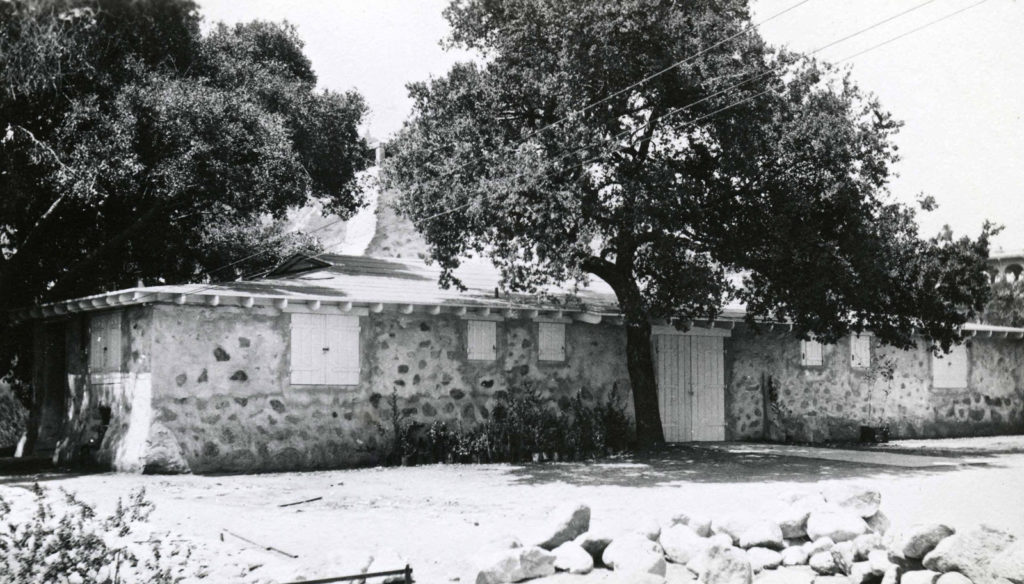
Click to enlarge.
Courtesy of the Archives at Pasadena Museum of History (P3-30)
1985 – Established a liaison with the Pasadena Garden Club and the Friends of the Arroyo to help restore La Casita del Arroyo, which was severely damaged when someone broke in and set three fires.
WPRA established a sub-committee on the potential renovation of the Vista Del Arroyo bungalow properties.
Established sub-committee to review environmental impact report related to the City’s interest in exchanging the city-owned rifle range near Eaton Canyon for the armory site in the Arroyo (the Desiderio Army Reserve Center).
1986 – Supported City’s new ban on overnight street parking to maintain the Pasadena “quality of life,” just one of the reasons “why people chose Pasadena as a place to live.”
WPRA kicked off a fund-raising drive toward the restoration of La Casita.
Shared concerns about the City’s plan to install high-intensity street lighting in west Pasadena.
1987 – Supported Neighborhood Action Group (NAG) objective to mitigate traffic issues on residential streets in the 710 freeway corridor and adjacent areas.
Supported General Service Administration proposal to convert Arroyo del Vista bungalows, which were deteriorating, for use as a legal research center.
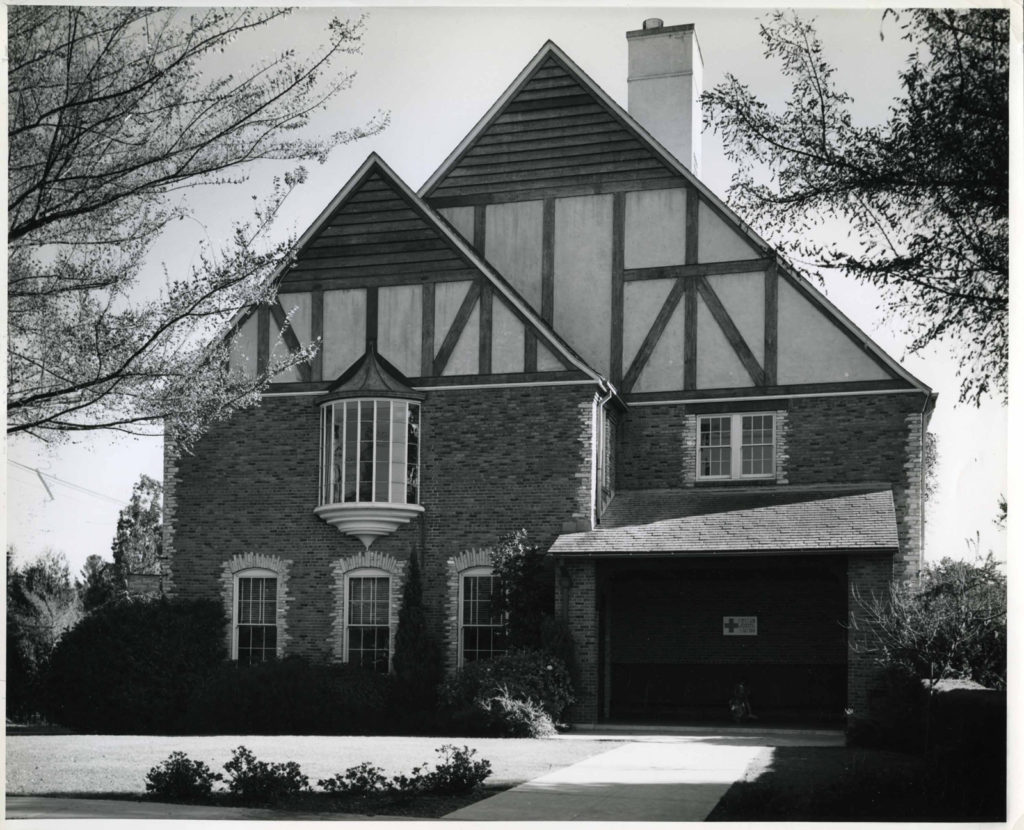
Click to enlarge.
Courtesy of the Archives at Pasadena Museum of History (S29-2)
1988 – The WPRA promoted San Rafael Elementary, pointing out that “diversity of the school population enables children to work on academics while becoming comfortable with people of many different cultural backgrounds,” within the WPRA Newsletter.
WPRA posted a survey within its newsletter: “What Do You Think About the Orange Grove Safety Control Measures?”
Applauded Caltrans for landscape beautification along the 710 freeway corridor.
1989 – The WPRA drew attention to the revival of the extended Long Beach Freeway campaign, now referred to as the SR-710 “closing the gap” freeway.
1990s
1990 – Members of West Pasadena Residents’ Association Board of Directors were appointed to the City’s Arroyo Task Force.
1991 – Members of West Pasadena Residents’ Association Board of Directors were serving as members of the Graffiti Think Tank. They reported that the Eradication Subcommittee will work with neighborhood associations to develop approaches to graffiti removal as requested.
WPRA started its participation with the analysis and decision-making for Pasadena’s next General Plan.
The WPRA sponsored a Freeway Forum focusing on 710 Freeway Final Environmental Impact Statement (FEIS) and the 25-year-old freeway plan. At this time, the City was supporting the closing of the 710 gap with a freeway through Pasadena and South Pasadena. The WPRA Board secured an independent traffic consultant to provide an independent perspective on the impacts of the proposed project.
1992 – In response to the concerns voiced during the June, 1991 WPRA Forum on traffic issues and the 710 Freeway, the Pasadena Department of Public Works commissioned a traffic circulation study of certain residential and commercial streets in the Southwest Pasadena area.
WPRA strongly advocated that commuter north-south traffic on Orange Grove be addressed with factual statistics.
The City Council appointed a WPRA member Bill Bogaard to sit on the Pasadena Redistricting Task Force and serve as its chair. The WPRA urged the Task Force to respect the WPRA boundaries when redrawing lines.
WPRA interviewed Mike Snyder, assistant director of public affairs for the World Wide Church of God, about selling its Ambassador College property for future development.
On the front page of the West Pasadena Residents’ Association News, the WPRA reached out to the community to encourage more volunteers to help in the classrooms.
WPRA expressed disappointment in the Mobility element’s “disinclination to deal with traffic issues.”
Urged the City to review “noise” pollution levels from air conditioners, freeway and street traffic, helicopters, public events, gardening equipment and commercial businesses.
The WPRA joined the Pasadena Neighborhood Coalition.
1993 – WPRA supported Pasadena Heritage’s campaign to save the bungalows around the Vista del Arroyo.
The WPRA initiated the Southwest Pasadena Traffic Study sought realistic methods to manage and “diffuse” traffic in areas that are overburdened by commuter traffic, especially feeding into the Pasadena Freeway and traffic exiting the end of the 710 “stump” at California.
Introduced residents to the Pasadena Blue Line, light-rail extension project scheduled for opening in 1997. (The light rail line was renamed as the Gold Line, and then most recently was renamed as the L line)
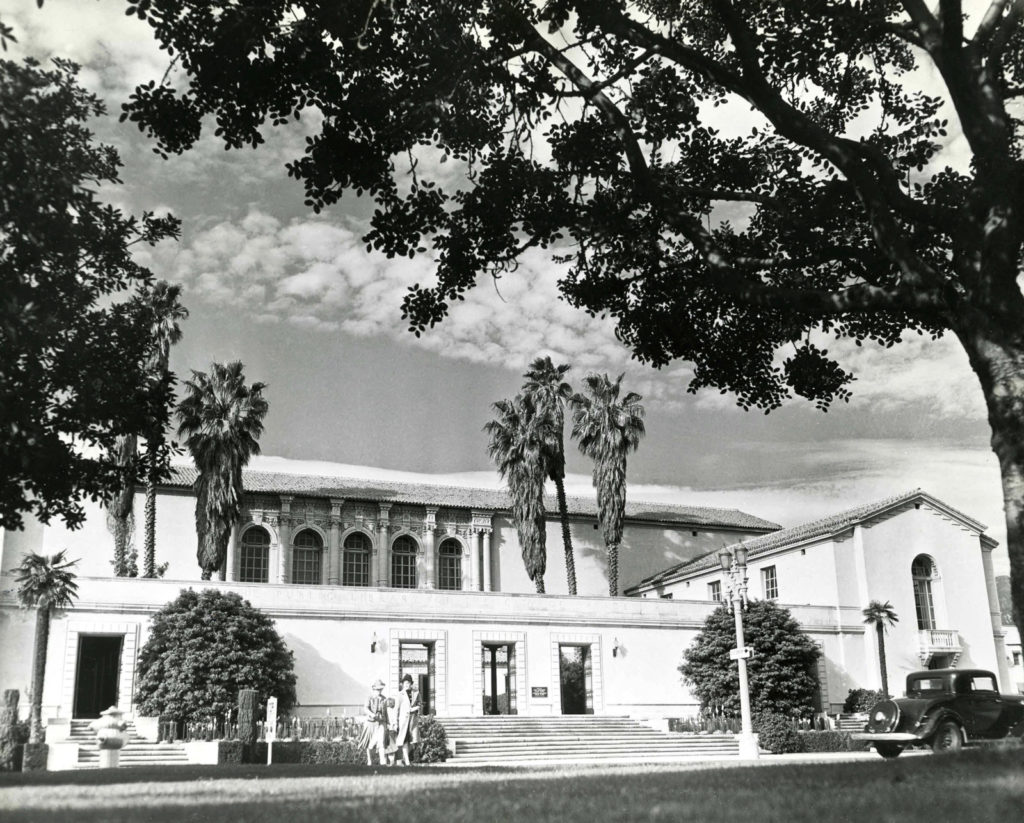
Click to enlarge.
Courtesy of the Archives at Pasadena Museum of History (L2-59)
WPRA promoted a renewed community commitment to the City library system and supported a special annual real property tax to help fund the libraries.
1994 – The WPRA continued efforts to mitigate the growing traffic issues created by the 110 freeway and 710 “stump” by encouraging the City to conduct a credible traffic study of southwest Pasadena.
Celebrated the completion of the rehabilitation and restoration of the Colorado Street Bridge (the first “curvilinear” bridge and then-tallest concrete bridge) and widening of both the Colorado Street overcrossing at Linda Vista and the west bridge approach.
WPRA participated in the community discussion related to crowd and traffic handling, as well as security issues, for the matches that would be held at the Rose Bowl Stadium as part of the 1994 World Cup.
Noted that three of the Vista del Arroyo bungalows would be demolished. Originally, 17 bungalows surrounded the hotel. Eight were sold to private individuals, two had already been demolished and four were being renovated for use as the campus of the Western Justice Center.
The WPRA expressed concern over potential horn and wheel noise from the Blue Line (later the Gold Line) and urged MTA representatives to test train horns.
Noted that Al Davis, NFL Oakland Raiders’ owner, rejected a plan to build a new Raiders stadium in Hollywood, which would also have meant that the Rose Bowl would have had no chance for a Super Bowl until 2010.
1996 – The WPRA participated in the discussions to create a West Gateway Specific Plan.
WPRA conducted a Southwest Traffic Study Questionnaire asking for resident comments and suggestions.
Urged the City to base its decision to create a Biotech area along South Fair Oaks and Raymond, south of California (which would be designated as a “redevelopment area” enabling the City to “cut corners”) on the impact it would have on citizens, not simply because state funding was available.
WPRA acknowledged that the Blue Line train horn blasts and wheel noise would have little audible impact more than 200 yards from the rails.
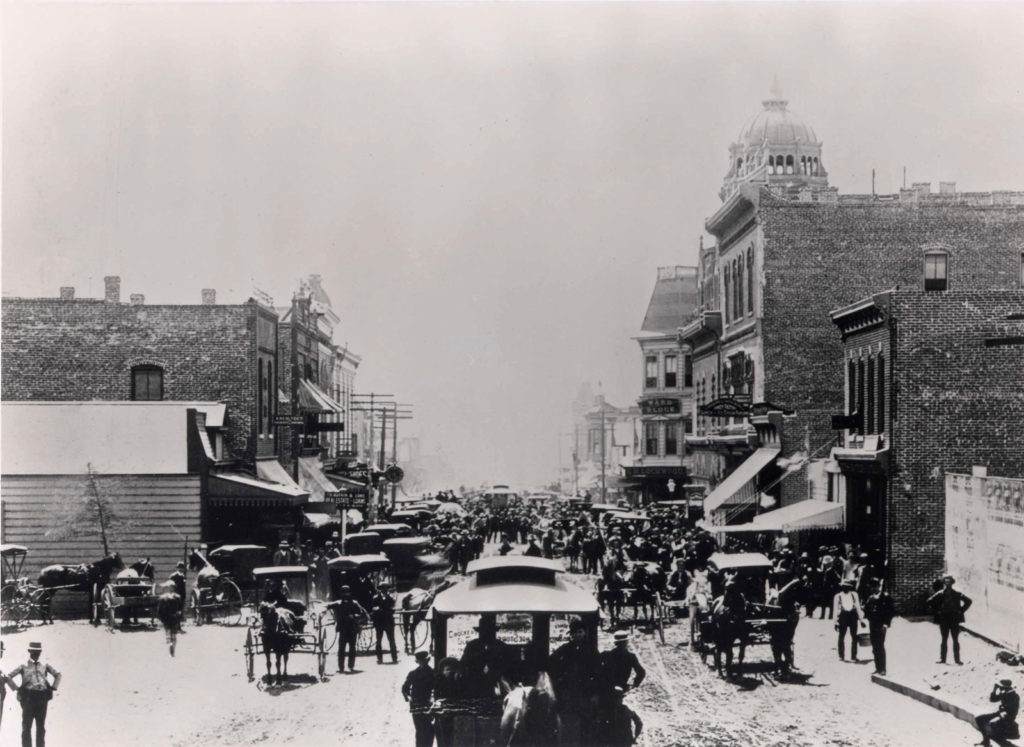
Click to enlarge.
Courtesy of the Archives at Pasadena Museum of History (S43-11A)
1997 – Opposed creation of Fair Oaks Biotech District Specific and Redevelopment Plan for a number of reasons including the cost of the infrastructure improvements necessary to attract high-tech firms, failure to demonstrate how future tax revenue would offset initial costs and limited available land.
WPRA opposed proposal to “resortize” (raise) Brookside Golf Course fees.
1998 – Supported formation of Singer Park Neighborhood Association to monitor issues that are most pressing for that area, but maintain affiliation and support of WPRA.
Participated in discussion leading to new vote on City Charter reform to have mayor selected by citywide vote (previously, members of the Board of Directors took a turn in rotation to serve as mayor), timing of the mayoral election and compensation for City Councilmembers.
WPRA joined the discussion about La Loma Bridge replacement or seismic retrofit, and a Council-approved 24-month limit on time that could elapse from issuance of a building permit to completion.
1999 – The WPRA urged residents to participate in the planning process for Legacy Partners which purchased the 50-acre former Ambassador College property from the World Wide Church of God for an estimated $59 million. It planned to build 1,943 units on the West campus and the East campus.
2000s
2000 – WPRA met with U.S. Rep Jim Rogan to seek help finding funding to complete the $12.4 million traffic mitigation measures recommended by the City Design Advisory Group.
Applauded the creation of the Historic Property Maintenance Fund for Caltrans-owned historic houses along the proposed 710freeway.
2001 – WPRA reported the results of a city-wide election regarding the proposed 710 freeway extension. West Pasadenans bucked the city vote by opposing winning Measure A (which established the City’s official position as “in favor” of the extension) and by supporting losing Measure C (which would have mandated a city-wide traffic and transportation study).
Supported City Manager’s recommendation for a new position in the Public Works and Transportation Department to focus on planning and mobility issues.
Announced that $46 million in federal funds had been earmarked for traffic mitigation along the 710 corridor.
2002 – Supported a strengthening of the City’s tree protection ordinance; many landmark, specimen and native trees on private property were being illegally removed or irreparably damaged.
WPRA helped form the Coalition for Protection of Arroyo Seco (CPAS) to preserve the Arroyo Seco, during the planning process for the Arroyo Seco Master Plan(s) (ASMP).
WPRA challenged the Arroyo Seco Master Environmental Impact Report (ASMEIR) by providing City Council with an analysis of the five ASMP elements.
The WPRA participated in the public review process of and supported the plan for the renovation of the Vista del Arroyo bungalows, which had gradually deteriorated since the mid-1940s and sold in 1980 to private owners, who, as Grand Vista Partners, proposed to restore the eight existing bungalows and convert them into 16 units. GVP also was granted permission to construct three new buildings with an additional 29 units.
Participated in the public review process for and generally supported the proposed to develop the Del Mar Gold Line Station. The line was renamed to avoid confusion with the Long Beach “Blue” line.
WPRA categorically opposed the Legacy Project’s high density housing proposal, even when the developer reduced the projected units from 1,943 to 1,727.
To help mitigate congestion around the proposed Ambassador Campus Development Plan (Legacy Project), the WPRA retained a traffic consultant to conduct an independent professional analysis of traffic impact out of concern that the proposal was so large it would have increased the number housing units in the WPRA service area by 40%. Legacy withdrew from the project.
Surveyed the San Rafael area residents to identify their top concerns: overdevelopment in west Pasadena (Legacy Project) and the growing traffic problem.
The WPRA supported efforts of west Pasadena residents who lease homes from Caltrans along the 710 corridor to form the “Caltran Tenants of the 710 Corridor”.
2003 – WPRA continued to address the Ambassador West Campus proposal by conducting a survey among residents of the WPRA service area and adopting a position about a reduced density and traffic congestion.
The WPRA adopted principles for the development of the Ambassador West Campus, stipulating: lower density, restricted height, compatibility and controlled traffic requirements.
Started tracking the NFL’s desire to be a tenant of the Rose Bowl. WPRA noted that City Council had authorized the Rose Bowl Operating Committee to explore the possibility of an NFL team becoming a tenant of the Rose Bowl, and provided a list of parameters the City should seek in its negotiations; expressed concern that the NFL was playing a “bait and switch” with Pasadena —baiting us “with an initial plan that was sensitive to the stadium’s historic nature, and then switching by subsequently pushing cost-cutting at the expense of the very historic aspects the prior plan preserved.”
2004 – The WPRA continued to express “major concerns” about the potential impact of the NFL on the Central Arroyo and the Rose Bowl Stadium.
Continued opposing the Worldwide Church of God campus development and announced that the church had sold five single-family homes on the Ambassador College West campus to private individuals (after the homes had been declared City Landmarks), sold the East campus to Sares-Regis Group for development, and submitted its own plan for the West campus, which included demolition of Ambassador Auditorium and construction of 696 housing units.
WPRA expressed surprise (and dismay) that City staff recommended construction of a 60-unit residential development on the site of the former Friends Paper Company (Green at De Lacey)
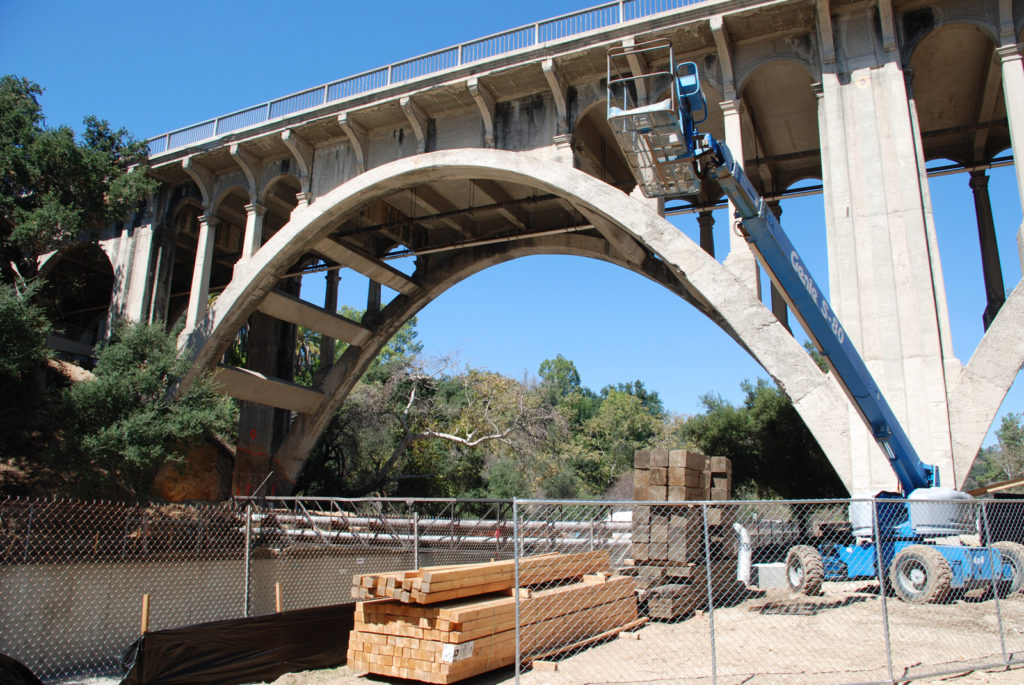
The WPRA supported the retrofitting and restoration of the La Loma Bridge.
WPRA applauded the plan to convert a 2.5 acre lot at Arlington and S. Pasadena into a Mediterranean climate botanical garden was underway, led by Charles & Betty McKenney (Arlington Garden).
Joined forces with the Old Pasadena Management District, Pasadena Heritage and others to ensure that the new Central District Specific Plan would not “lead to bad development of the city’s historic downtown for the next decade, with too little park land and too much residential development.”
2005 – Opposed the Sares Regis’ plan to construct 829 multi-family units and 30,000 square feet of retail/commercial development in the Ambassador College East campus.
WPRA surveyed west Pasadena citizens’ attitudes about the NFL leasing the Rose Bowl. Nearly 60% were totally against the idea while only 10% favored it. Then the WPRA issued a plea for help and contributions to oppose the NFL lease of the Rose Bowl.
Issued a plea for help and contributions to oppose the NFL lease of the Rose Bowl.
WPRA opposed the Pasadena Unified School District’s proposal to close San Rafael Elementary School.
2006 – After reviewing the Draft Environmental Report, the WPRA continued to express concerns over the density of the Sares-Regis proposal to develop the Ambassador East and West campus projects, questioning the validity of the draft environmental impact statement and challenging the idea that the so-called “urban village” project was consistent with the General Plan and the Central District Specific Plan.
WPRA joined with Concerned Neighbors of Mayfield Senior School to oppose elements of the school’s updated master plan.
WPRA expressed disappointment that although the citizens of Pasadena and City Council (in 2005) had rejected the idea of an NFL team occupying the Rose Bowl, three councilmembers had sponsored a ballot initiative to raise the issue again.
WPRA participates to defeat the NFL in the Rose Bowl ballot initiative.
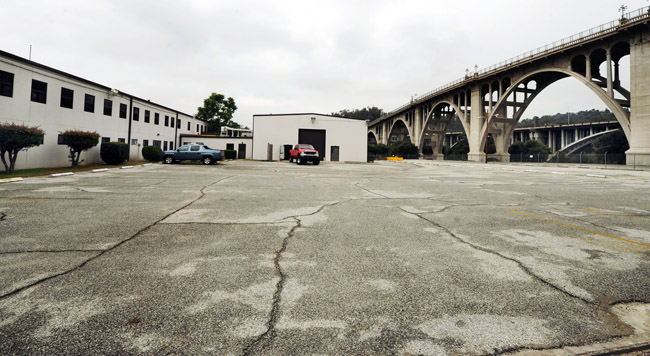
WPRA started monitoring the re-use of the Desiderio Army Reserve Center, then open for redevelopment and participated in the public comment process.
2007 – The WPRA continued to track the Ambassador West Project as developers changed, announcing that Standard Pacific Homes had pulled out of the Ambassador West project, purchased from the Worldwide Church of God by a consortium of investors headed by developer Dorn Platz.
WPRA engaged in the discussion about City Council’s decision to approve for Desiderio Army Reserve Center (under the Colorado Street Bridge) a nine-unit affordable bungalow court to be built by Habitat for Humanity, with 75% of the space devoted to open space and a possible art/environmental center, once the federal government releases the property to the City.
Urged residents to become engaged when the City initiates the next update of the General Plan; cited 16 topics the City must address to ensure the updated General Plan’s approach to development is more balanced and moderated than in the past.
The WPRA objected to the City staff’s recommendation that speed limits should be increased throughout the city merely because motorists were speeding on those streets.
2008 – Continued to track the Ambassador West Project as developers changed again. Announced that Dorn Platz had withdrawn from the Ambassador West project. Also noted that ACP Properties and Ambassador Acquisition Coalition Partners II had defaulted on a $44 million loan and gone into receivership.
The WPRA developed, introduced and sponsored student enrichment programs for San Rafael Elementary School.
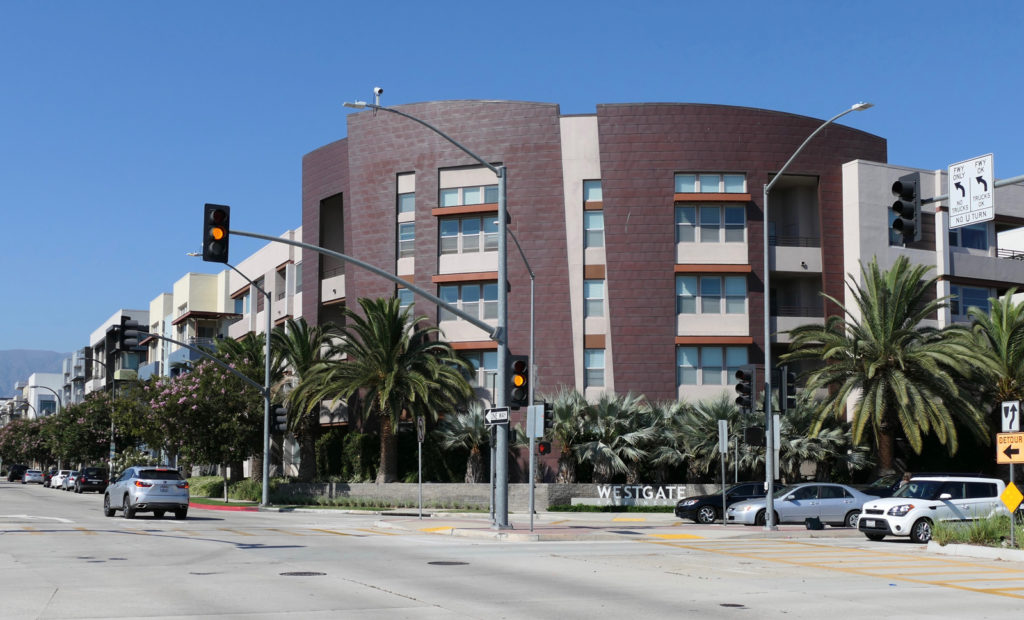
Reviewed the West Gate Specific Plan and expressed concern about the number of permissible units and potential encroachment of commercial enterprises into neighborhoods.
WPRA received a donation from Pasadena First, the lead organization in the successful effort to defeat the 2006 ballot initiative about the NFL in the Rose Bowl. PF hailed the WPRA as “an early and enthusiastic supporter and one of the first major contributors to the anti-NFL effort.”
Made the case for preserving open space and purchasing more of it.
Applauded the completion of a $2.5 million Central Arroyo Stream Restoration Program.
The WPRA objected to the City’s approach to AT&T’s intention to install U-Verse cable and Internet service boxes in area neighborhoods throughout the city.
2009 – Conducted survey of residents of ZIP code 91105: residents were most concerned about crime (71%), traffic congestion (67%), development design (65%) and overdevelopment (63%)
WPRA supported listing of central and lower Arroyo Seco on the National Register of Historic Places.
The WPRA formed Community Safety Committee to report criminal activities and encourage formation of neighborhood Watch units.
2010s
2010 – WPRA explored how the General Plan, which was being updated, could be impacted by state legislation intended to encourage the majority of growth and development to occur in urban transportation hubs (Gold Line stations, for example).
2011 – Opposed the Pasadena Unified School District’s proposal to close San Rafael Elementary School and the City’s attempt to relocate Fire Station 39 to the school’s playground.
The WPRA acknowledged significant reservations about temporary use of the Rose Bowl by the NFL and agreed to take a survey.
WPRA donated to the City’s 125th birthday celebration.
Supported an appellant who urged the City to identify a different location for a new cell antennae, expressing concern about the site selection process and recommending that the Planning Department should find a location that would bring additional revenue to the City.
The WPRA continued stewardship of parks and open space by urging City to use at least 50% the Residential Impact Fees collected from new development for park acquisition and to reverse the practice of using the fees for maintenance.
Recommended a plan to ensure the continued safe operation of the archery range and to preserve access to all of the Arroyo Seco.
Contributed to the IDS Playhouse District suit filed the Pasadenans for a Livable City and Pasadena Heritage, and celebrated when the courts found in favor of the plaintiffs.
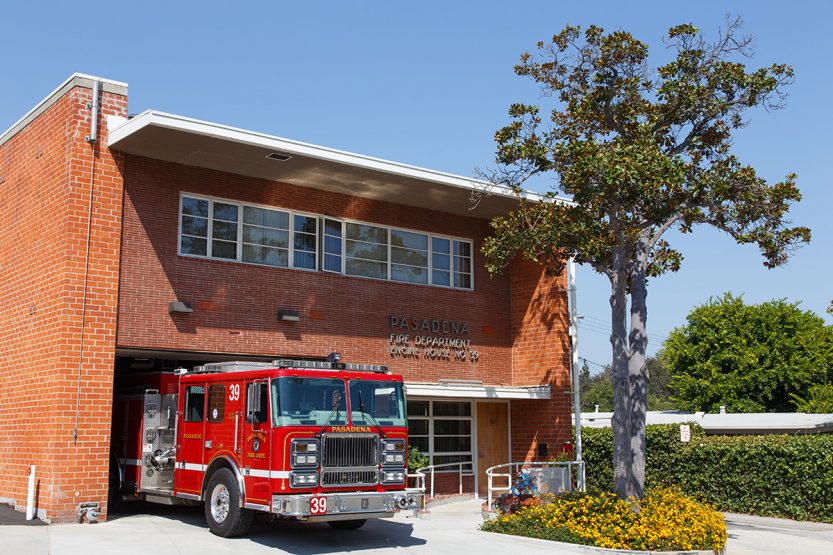
Expressed concern when the City precipitously shuttered Fire Station #39 and convened a community meeting to discuss the topic.
2012 – WPRA conducted the survey of area residents about the possibility of an NFL team temporarily leasing the Rose Bowl Stadium until its permanent new stadium can be built: 43% were against the idea under any condition; 37% would consider it if certain conditions were met; 19% expressed unconditional approval of the idea. The WPRA publically opposed the temporary use of the Rose Bowl by the NFL and supported other neighborhood organizations’ lawsuit to legally challenge the City Council’s certification of the Environmental Impact Report (EIR) related to the potential temporary lease of the Rose Bowl by an NFL team.
The WPRA maintained its monitoring of the Ambassador West Project as developers changed once more – Arroyo Realty withdrew from the project, City Ventures started construction on first ten homes along Del Mar.

Donated to Pasadena Beautiful’s “Windstorm Tree Fund,” which was created to raise funds to replace the trees lost during the “Hurricane Rose” windstorm of Nov. 30 – Dec. 1
WPRA started monitoring City planning for Central District General Plan by advocating that change must be harmonized to preserve Pasadena’s historic character and environment.
Having officially “adopted” San Rafael Elementary School, WPRA started working with the west side community to support the means to save it from demolition due to earthquake geophysical testing.
WPRA publically ramped up its full scale opposition to the proposed SR710 freeway tunnels with an alert to the community stating that Metro was pushing a predetermined agenda with misleading information.
WPRA pressed for water capture and environmental safeguards within the pending Devil’s Gate sediment removal project.
WPRA supported the La Casita Foundation refurbishing project.
2013 – WPRA continued to publically explain through its newsletters how Metro’s proposed SR710 tunnel project was unfeasible to build and would not ease neighborhood traffic congestion.
WPRA board members became part of the “7-11 Committee” which provided recommendations relating to future uses of the San Rafael Elementary property.
As community desire for San Rafael Elementary enrollment rose, WPRA maintained its support for keeping the school open beyond 2014. The proposed closing date was pushed to 2015.
WPRA continued its oversight of the Ambassador Campus construction beyond the completion of the first 10 units along Del Mar.
The WPRA helped fund the legal action against the City for certifying the EIR which inadequately addressed negative impacts if the NFL temporarily leases the Rose Bowl. The NFL never did gain access to the Rose Bowl.
WPRA co-sponsored a successful community “friendraiser,” which raised $45,000 for the La Casita Foundation’s refurbishing project.
WPRA tracked Pasadena’s developing General Plan by explaining the concept within its newsletter.
WPRA established its position against “mansionization”.
The WPRA began tracking the Lincoln, 100 West Walnut property project on the Parsons’ site.
2014 – Regarding Metro’s presumed intention to close the SR-710 gap with tunnels, the WPRA committed to further independent analysis of all the elements of the plan that could negatively and uniquely impact Pasadena.
WPRA continued to consult with Ambassador Gardens East project manager as design moved forward for lower campus and what would become the west campus named the “Grove” and “Jaimeson Place”.
The WPRA formally objected to the County’s aggressive remediation plan for removing 5 million cubic yards of more of dirt and debris from the Devil’s Gate Dam and advised alternatives.
Three WPRA Board members were appointed by the Pasadena Unified School District to a Surplus Property Advisory Committee to consider the future of San Rafael Elementary. In their report, the Committee recommended that the PUSD Board not declare the property surplus. The potential closure of San Rafael is delayed again to at least 2016.
2015 – WPRA increased its vigilance of opposition against the proposed SR-710 tunnel alternative by devoting almost the entire winter publication of WPRA’s The News for public awareness and asking for additional funding to fight the tunnels project and creating an independent expert response team.
WPRA analysis found the SR-710 Draft Environmental Report grossly inadequate. The WPRA response team believed the report showed clear bias in favor of the tunnel alternative.
WPRA continued to support the curtailing of allowed mansionization by the current Pasadena zoning regulations.
In its continued efforts to save San Rafael Elementary, WPRA publically opposed the PUSD Board for voting unanimously to declare the school surplus property, easing the process of closing the school.
The WPRA pressed for a re-examination of the earthquake geology survey with trenching on the San Rafael property to confirm whether or not the suspected faults did, in fact, exist and if they were active. With a new superintendent and school board, the authorized second survey showed no active faults. The surplus property designation was removed.
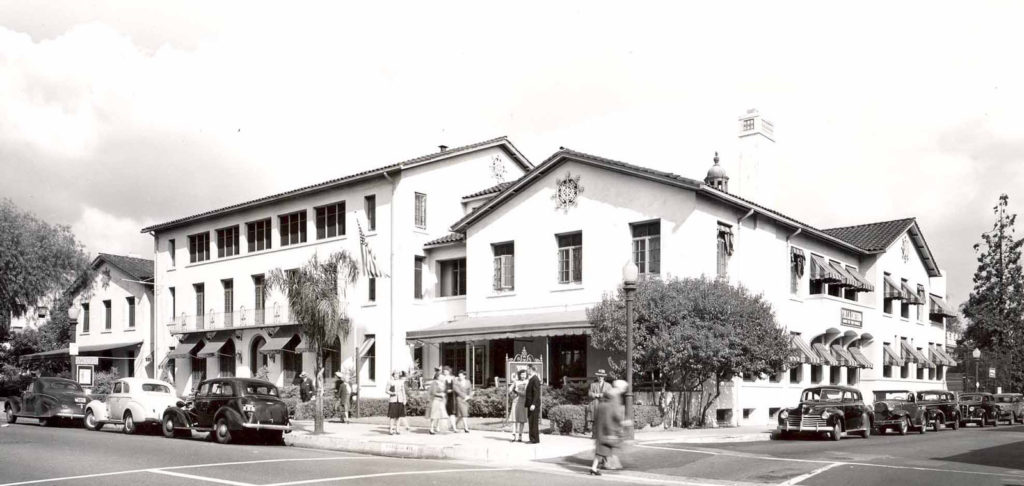
2016 – City presented its Draft Environmental Report for the rehabilitation of the YWCA and proposed Kimpton Hotel in the Civic Center. The majority of Pasadena residents and city planners advocated the smallest hotel foot print, with the least story height and the deepest setback from Garfield Avenue. Kimpton pressed for the largest capacity of rooms it could get.
WPRA’s research revealed the original Kimpton Hotel project had been converted in 2015 to a private equity investment instrument intended for resale within five to seven years. The WPRA opposed the selected project design for 185 rooms with a 30-40 foot setback from Garfield Avenue.
The WPRA strongly pressed the City Council to allow an adequate and early evening comment period for public debate regarding the Civic Center YWCA/Kimpton Hotel project.
Having prevented the NLF’s attempt to convince the City to allow it a temporary lease, WPRA continued to monitor the rising number of other Rose Bowl events and their impacts to the surrounding neighborhoods.
The WPRA continued to alert the public about the adverse environmental impacts caused by the future SR710 tunnel alternative.
WPRA continued its support of San Rafael Elementary with donations and the publication of its many successes and challenges. The school flourished.
WPRA edits public information campaign explaining the practice of mansionization and how it erodes a community’s sense of place, history, identity and integrity.
2017 – The WPRA alerted the community to the potential impacts of short-term rentals such as Air B&B and supported a balanced, nuanced approach to STR regulation. WPRA then conducted a broad survey of the community to determine the best approach to regulating short-term rentals.
The WPRA contributed to the Pasadena Civic Center Coalition Legal Fund fighting the approved large scale, six-story Civic Center hotel project which would replace most of the open park-like space opposite City Hall.
The City Council voted unanimously to suspend the proposed YWCA/Kimpton Hotel project and instead, created a citizen task force to find a more acceptable solution for rehabilitating the YWCA and developing the Civic Center as an entire unit.
A WPRA Board Member became part of the Civic Center Task Force and conveyed the WPRA’s desired planning guidelines within the committee meetings. WPRA board members also submitted letters and spoke at these meetings within the comment periods.
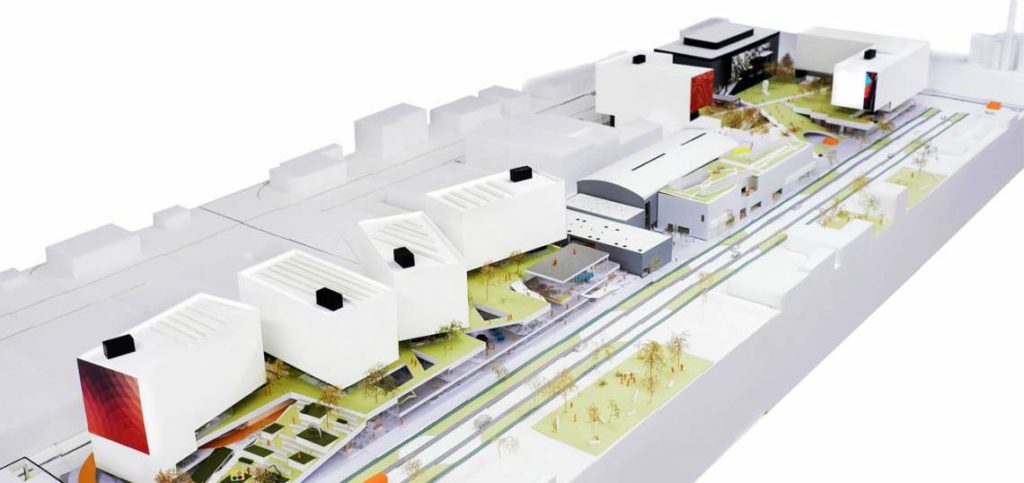
WPRA supported Art Center’s South Campus Master Plan.
WPRA starts tracking the state’s legislative initiatives to increase housing availability by overriding local city zoning regulations, including Pasadena’s mandate for controlled density expansion.
WPRA strongly advocated with written documentation a slow, smarter and less disruptive removal of sediment around the Devil’s Gate Dam. This advocacy continued into 2018 and 2019.
WPRA celebrated LA Metro’s Board’s unanimous vote against the SR710 tunnel alternative and its selection of the Transportation System Management/Transportation Demand Management (TSM/TDM) alternative.
2018 – The WPRA continued to work with the Civic Center Task Force and after its final meeting, the Task Force provided City Council with its recommendations. The City restarted the Civic Center development project with another round of request for proposals.
WPRA urged City Council to cite Caltrans for code violations and call out Caltrans’s unethical tactics toward the current Caltrans 710 corridor property renters and buyers.
WPRA hired counsel in the advent that WPRA and other stakeholders needed to sue Caltrans to finally stop any potential movement to reinitiate the tunnel alternative project.
The WPRA continued to track and educate the public about the state’s legislative bills which override Pasadena’s city planning and zoning regulations.
In lieu of the rejected tunnel alternative, WPRA supported all of Metro’s proposed mobility improvements except the closure of the 134/210 on and off ramps.
WPRA opposed the building of a public restroom within the new neighborhood Desiderio Park.
WPRA continued to fight against mansionization, which includes design guidelines and style incompatibility; as in scale, privacy and view obstruction, inadequate parking and the need for neighborhood notification through the plan-check process.
The WPRA opposed Art Center’s proposal to mount a 40-foot high, 120-foot wide digital display on its building at 1111 So. Arroyo Parkway. Art Center pressed the City to change the signage zoning ordinance to allow what is, in effect, a stadium type jumbotron.
WPRA continued to monitor and report on the Devil’s Gate Sediment Removal Project, calling out the air pollution and eco damage already in progress while demanding ecological responsibility for maintaining the trees, shrubs and wildlife when removing the debris from the Hahamongna Watershed.
2019 – The WPRA continued to keep its constituency informed about the state’s housing increase mandates which influence Pasadena’s planning and zoning ordinances.
Caltrans dropped the tunnel alternative entirely from future development. In view of the victory, WPRA released its legal counsel.
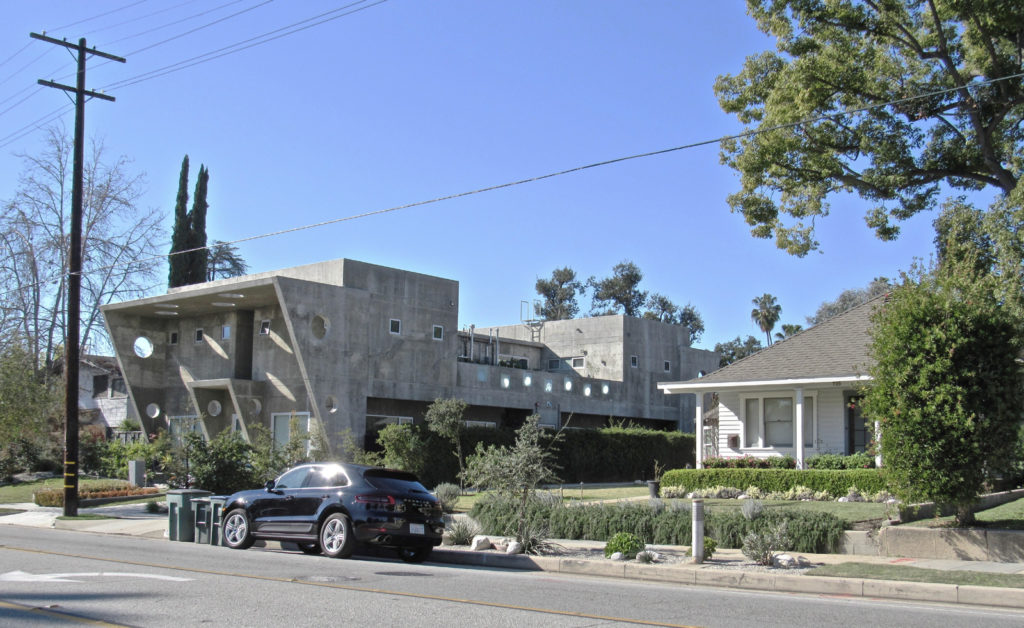
On the WPRA “Watch List”: Eight Pasadena specific plans, Mansionization, the Castle Green Hotel and its parking lot, the Civic Center, the Desiderio Park restroom facility and the Fuller Theological Seminary campus sale.
The WPRA continues to press for eco-sensitive sediment removal from the Devils Gate Dam.
WPRA publically addressed the City’s allowance of zero-setback for new commercial construction along Green and other streets which seriously contributed to the loss of trees along the sidewalks.
As a public service, WPRA defined and explained the new State housing laws and rule which superseded Pasadena’s previously established zoning requirements.
2020s
2020 – WPRA opposed the Arroyo Seco Canyon Project DEIR with spreading basins as well as the Lower Arroyo Habitat Restoration Plan as proposed and then suggests alternatives.
WPRA, along with Linda Vista-Annandale Association and Madison Heights Neighborhood Association continued to support Pasadena appealing the SCAG draft 2021-2029 RHNA allocation which would result in an untenable number of out-of-scale, out-of-character, dense, large buildings with related traffic and other infrastructure impacts.
WPRA advised Mayor Tornek, City Council and the Planning department for Phase 2 – the “mansionization” Zoning Code Amendment, stating specific suggestions & potential guidelines. Council passed unanimously compatibility guidelines for the flats of Pasadena incorporating much of WPRA’s advice.
WPRA continued to monitor the City’s development for the YWCA and the Department of Water and Power lot, now designated for an affordable housing complex. WPRA still opposed the 45 setback from Garfield and continued to support the Civic Center Coalition’s CEQA suit against the City to maintain 107 foot setback of open space opposite City Hall.
